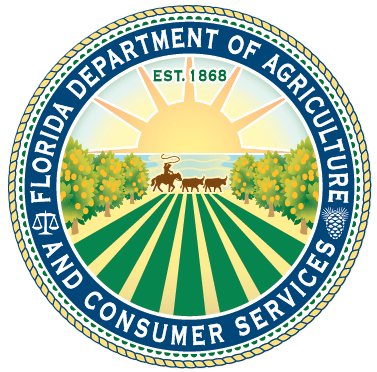Quick facts
- An ENERGY STAR® certified refrigerator or refrigerator freezer larger than 7.75 cubic feet must use at least 10 percent less energy than required by current federal standards.
- An ENERGY STAR certified freezer larger than 7.75 cubic feet must use at least 10 percent less energy than required by current federal standards.
- An ENERGY STAR certified compact refrigerator or freezer whose volume is less than 7.75 cubic feet must use at least 10 percent less energy than required by current federal standard.
Refrigerators
Your refrigerator is the only home appliance that operates continuously. In most households, the refrigerator is the single biggest energy consuming kitchen appliance. You can see the expected lifetime energy savings of an ENERGY STAR certified refrigerator, freezer or compact refrigerator by clicking on the Refrigerator Retirement Savings Calculator.
Many features contribute to the development of standards for both refrigerators and freezers, including the configuration of the device; side-by-side, top freezer, bottom freezer, single door refrigerators, built-in refrigerators, chest freezer, and upright freezer: defrost feature—automatic or manual; ice maker—no ice maker, automatic ice maker, or through-the-door ice maker. The United States Department of Energy therefore sets minimum standards based on these features. Information on the standards for each configuration can be found here. You do not need to compromise on features you prefer when choosing ENERGY STAR certified refrigerators. Many of them include features such as an automatic ice-maker, a through-the-door ice and water dispenser, or a top-mount, bottom-mount, or side-by-side freezer. However, keep in mind that automatic ice-makers and through-the-door dispensers increase energy use and raise the purchase price.
The most energy efficient models are the 16 to 20 cubic foot sizes. In general, the larger the refrigerator, the greater the energy consumption and associated operating costs. A model that’s too large will waste space and energy; on the other hand, a model that’s too small could mean extra trips to the grocery store.
Placement of the refrigerator is very important. Direct sunlight and close contact with heat sources such as heating vents, the stove, or dishwasher will make the refrigerator’s compressor work harder. Most important, the compressor and condensing coil must have adequate ventilation. The proper “breathing” space will vary depending on the location of the coils and compressor on each model—something important to know before purchasing a unit or remodeling your kitchen. Because most refrigerators give off heat from the bottom and/or back, they need adequate clearance to allow sufficient airflow. Though no specific studies have been conducted to calculate the optimum clearance space, one general rule-of-thumb is to double the space recommended by manufacturers for refrigerator installation. Another rule-of-thumb is to allow two inches of air flow around the refrigerator.
Freezers
The decision whether to own a separate freezer should be based on an evaluation of your needs. The energy efficiency of a freezer depends on its size and type. To qualify for the ENERGY STAR label, freezers with a volume of 7.75 cubic feet or greater must be at least 10 percent more efficient than the federal standard.
A chest freezer generally uses less energy than an upright model because cold air does not escape as easily when the door is opened. Manual defrost models consume 50 percent less energy than comparable automatic defrost ones. However, because ice build-up can significantly decrease the efficiency of the freezer, you will need to defrost periodically to ensure that there is never more than a quarter inch of ice (the maximum thickness recommended for the freezer to operate efficiently).
Refrigerator and Freezer Purchasing Tips
1. Choose the right size and type for your needs.
You need to choose the size and type of refrigerator or freezer that fits your needs. Generally, the larger the refrigerator or freezer model, the greater the energy consumption and the associated operating cost. The most energy-efficient refrigerator models are typically 16 to 20 cubic feet. The most energy-efficient freezer models are typically chest freezers.
2. Choose a model with a blue ENERGY STAR label.
As indicated previously, ENERGY STAR certified refrigerators and freezers save you money during their lifetime by reducing energy costs.
3. Compare yellow EnergyGuide labels.
A yellow EnergyGuide label includes information on the energy usage of the product, energy usage comparisons with similar models, and estimated annual operating costs.
4. Consider buying a top-mount refrigerator-freezer.
Top-mount refrigerator-freezer models use less energy than a 60-watt light bulb. Usually, refrigerators with top-mounted freezers use less energy than refrigerators with either side-mounted or bottom-mounted freezers but other factors can play a role such as size of a given refrigerator/freezer, its defrost type, and whether the model has through-the-door ice.
5. Consider a model without an ice-maker and dispenser.
Automatic ice-makers and through-the-door dispensers increase energy use and raise the purchase price. In addition, by purchasing a model without an ice maker or water dispenser, you won’t have to worry about water leaks or replacing filters.
6. Look for a refrigerator with automatic moisture control, but without an anti-sweat heater.
Models with automatic moisture control have been engineered to prevent moisture accumulation on the cabinet exterior without the addition of a heater. This feature differs from an “anti-sweat” heater that actually produces heat. Models with an anti-sweat heater will consume more energy than models without this feature.
7. Consider a freezer model with manual defrost.
Manual defrost models consume 50 percent less energy than comparable automatic defrost models. However, if purchased, be sure to follow manufacturer’s directions as to when to defrost the unit because ice buildup will decrease energy efficiency and negate the cost savings.
Refrigerator and Freezer Operation Tips
ENERGY STAR recommends the following tips to operate your refrigerator and freezer more energy efficiently and increase savings.
- Position your refrigerator away from heat sources such as a heating vent, oven, range, dishwasher, or direct sunlight from a window. The extra heat will make the compressor work harder. More importantly, there must be adequate circulation around the compressor and condensing coil so that heat can escape.
- Allow air to circulate around the condenser coils; leave a space between the wall or cabinets and the refrigerator or freezer, and keep the coils clean.
- Make sure the door seals are airtight.
- Operate your refrigerator between 35º F and 38º F and your freezer at 0º F.
- Minimize the amount of time the refrigerator door is open.
- Recycle older refrigerators.
ENERGY STAR Make a Cool Change: Recycle Your Old Fridge (Refrigerator) Campaign
The ENERGY STAR Make a Cool Change: Recycle Your Old Fridge (or Freezer), is a campaign by the U.S. Department of Energy, to encourage proper recycling of old, inefficient refrigerators or freezers in order to save money, energy and the environment. ENERGY STAR recommends the following four ways to recycle old refrigerators and freezers.
1. Recycle your old fridge or freezer when you buy a new ENERGY STAR model.
Many appliance retailers will pick up and recycle your old refrigerator or freezer when you purchase a new one. Some retailers or manufacturers also offer cash rebates when you buy a new refrigerator. By entering your zip code, you can search for special offers and rebates in your area and the Database of State Incentives for Renewables and Efficiency (DSIRE) website. Purchase your appliance from retailers that partner with EPA’s Responsible Appliance Disposal (RAD) Program. By partnering with RAD, which is voluntary, retailers help protect the ozone layer and reduce greenhouse gas emissions.
2. Check with your local electric utility.
Many local utilities and energy-efficiency organizations support refrigerator and freezer recycling programs. Some programs offer cash to recycle your old refrigerator while others offer utility-bill credits. You can find the special offers and rebates using the links above to special offers and rebates in your area.
3. Ask about municipal pick-up of appliances.
Check with your local waste-management division as they may offer heavy trash pick-up and recycling programs for large appliances. For information, contact them directly.
4. Talk to your local scrap metal recycler.
Locate Steel Recycling Institute’s recyclers in your area. Note that the average 10 year or older refrigerator contains more than 120 pounds of recyclable steel.
ENERGY STAR® Product Finder
The table(s) below offer a real-time list of ENERGY STAR® Certified products related to this fact sheet. Using the vertical and horizontal scroll bars, you can look for specific manufacturer brand names, model numbers, and compare a variety of product specifications and energy performance metrics. Individual columns can be filtered using the column specific “Menu” icons adjacent to their “Information” icons. The entire dataset can be searched using the “Magnifying Glass” icon in the dark grey bar at the top of the table.
Certified Residential Refrigerators
Certified Residential Freezers
References and Resources
Portions of this document are modified with permission from Home Series 4 (Major Home Appliances), originally developed by the Iowa Energy Center, 2009 and 2012.
U.S. Department of Energy. Database of State Incentives for Renewables and Energy Efficiency (DSIRE). Retrieved May 13, 2015.
U.S. Department of Energy. Building Technologies Office. Residential Refrigerators and Freezers. Retrieved May 8, 2015.
U.S. Environmental Protection Agency. Responsible Appliance Disposal (RAD) Program. Retrieved May 14, 2015.
U.S. Environmental Protection Agency ENERGY STAR Program. Find a Fridge or Freezer Recycling Program. Retrieved May 14, 2015.
U.S. Environmental Protection Agency ENERGY STAR Program. Refrigerators & Freezers Key Product Criteria. Retrieved May 8, 2015.
U.S. Environmental Protection Agency ENERGY STAR Program. Refrigerators Buyers Guide.
U.S. Environmental Protection Agency ENERGY STAR Program. Refrigerators for Consumers.
U.S. Environmental Protection Agency ENERGY STAR Program. What’s more energy efficient, a refrigerator with a top-mounted freezer, bottom-mounted freezer, or a side-by-side? Retrieved May 18, 2015.
Acknowledgements
Authors: Kathleen C. Ruppert, Extension scientist, Program for Resource Efficient Communities; Randall A. Cantrell, assistant professor, Department of Family, Youth and Community Sciences; and Hyun-Jeong Lee, former assistant professor, Department of Family, Youth and Community Sciences, Florida Cooperative Extension Service, Institute of Food and Agricultural Sciences, University of Florida, Gainesville, FL 32611. First published May 2009; revised May 2015.




